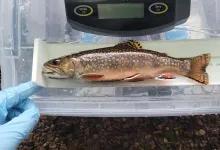(Press-News.org) AUSTIN, Texas -- While nonprofit organizations are growing, their donations are shrinking. The number of nonprofits registered with the Internal Revenue Service grew 25% from 2013 to 2023. But during the past year, both money raised and donor counts have dropped 3%.
Their main challenge is low response rates for fundraising solicitations, says Vijay Mahajan, professor of marketing at Texas McCombs. In turn, a major reason is lack of quality data on donors, which makes it harder to successfully target their appeals.
Nonprofits tend to keep data on active donors, such as how much and how often they donate. But it’s often too expensive to gather and maintain data on others, such as prospective donors.
In new research, Mahajan identifies a workaround. Instead of using actual donation histories to predict who might respond to fundraising appeals, nonprofits can use community-clustered profiles.
The profiles use readily available public data to identify where potential supporters are more likely to live, based on demographic, financial, and social characteristics.
“Nonprofits can learn a lot about their donors using the data in community profiles,” Mahajan says. “If you go to secondary sources for data at the state and ZIP code levels, you can tell a lot in terms of who is going to respond to you.”
Picturing Potential Donors
Typically, Mahajan says, fundraising teams appeal to three types of donors. They try to keep active ones while reactivating lapsed ones and acquiring new ones. Community-clustered data, he believes, might help them target all three.
His underlying theory is that birds of a feather flock together. People with similar backgrounds and lifestyles tend to gravitate into the same communities.
To test the concept, he partnered with Shameek Sinha of the University of Auckland, Sumit Malik of the University of Liverpool, and the late Frenkel ter Hofstede of Texas McCombs. They gathered publicly available survey data by state and ZIP code.
The largest dataset came from the Direct Marketing Educational Foundation, which sends direct mail solicitations to individuals who have donated at least once. It covered 429,310 donors over 15 years. Other data sources covered communities by lifestyle, crime rates, and religion.
The researchers’ resulting model mapped 44 characteristics to create profiles for each community. Gender, household size, and financial status had the most influence on potential to donate.
Based on those profiles, they predicted the success rates for targeting appeals for each donor group. When they compared their predictions with actual donation behavior, the success rates were similar.
That means that when fundraisers are short on donor information, they can use such profiles instead, Mahajan says. “You don’t have to know all the details about your contributors. Just find out where your people live.”
Practical Uses for Profiles
Nonprofit managers can use the study’s findings in several ways, the researchers say.
Mix and match. Fundraising teams can add community-clustered profiles to their existing data on donors to improve response rates.
Seek potential donors. Where information on possible new donors is sparse or costly to acquire, nonprofits can use profiles to identify the communities in which they’re most likely to live.
“They identify donors in that community who match that profile and target them with their donation solicitation efforts,” Sinha says. “This way, nonprofits can avoid spending millions of dollars to collect and use behavioral data.”
Awaken dormant supporters. Community profiles were most accurate at identifying lapsed former donors who could be persuaded to contribute again.
Best of all, for resource-strapped nonprofits, the data is there for the taking, Mahajan adds. “You don’t have to conduct the research on your own. It’s already been collected. Just that information itself can tell you a lot about the people who are contributing or not contributing.”
“Retain, Reactivate or Acquire: Can Nonprofits Reliably Use Community Profiles as an Alternative to Past Donation Data?” is published in the Journal of Business Research.
END
Looking for donors? Start with where they live
Nonprofits can use public data to target fundraising appeals by state and ZIP code
2025-03-18
ELSE PRESS RELEASES FROM THIS DATE:
Mastery of language could predict longevity
2025-03-18
Everyone ages, but, sometimes, people outlive all predictions. Previous research has uncovered an unlikely factor related to longevity: intelligence (Bäckman & MacDonald, 2006; Bosworth & Siegler, 2002).
However, intelligence isn’t a simple characteristic. There are many traits that contribute to it that can be tested—from memory to mathematical logic. In a 2024 Clinical Psychological Science study, Paolo Ghisletta of the University of Geneva linked longevity specifically to one of those traits: verbal fluency, the measure of one’s vocabulary and ability to use ...
Threatened by warming waters, brook trout may be able to adapt to hotter weather
2025-03-18
UNIVERSITY PARK, Pa. — Brook trout may have a genetic trick up their scales when it comes to adapting, with limitations, to heatwaves that threaten their existence. Scientists have known for years that brook trout — an iconic coldwater fish species native to streams and lakes in the eastern United States and Canada — are extremely vulnerable to warming temperatures, with more than half of their habitats characterized as highly sensitive and highly vulnerable to such changes by U.S. Forest Service researchers in 2010. Now, a novel study led by researchers ...
AI ring tracks spelled words in American Sign Language
2025-03-18
ITHACA, N.Y. – A Cornell University-led research team has developed an artificial intelligence-powered ring equipped with micro-sonar technology that can continuously and in real time track fingerspelling in American Sign Language (ASL).
In its current form, SpellRing could be used to enter text into computers or smartphones via fingerspelling, which is used in ASL to spell out words without corresponding signs, such as proper nouns, names and technical terms. With further development, the device – believed to be the first of its kind – could revolutionize ASL translation by continuously tracking entire signed words and sentences.
“Many other technologies that recognize ...
What’s behind the ‘pop and slosh’ when opening a swing-top bottle of beer?
2025-03-18
WASHINGTON, March 18, 2025 — In a fun experiment, Max Koch, a researcher at the University of Göttingen in Germany — who also happens to be passionate about homebrewing — decided to use a high-speed camera to capture what occurs while opening a swing-top bottle of homebrew.
When Robert Mettin, who leads the Ultrasound and Cavitation group at the university’s Third Institute of Physics, Biophysics, suggested that Koch should submit the findings to the special “kitchen flows” issue of Physics of Fluids, from AIP Publishing, Koch and his colleagues chose to ...
Adherence to annual lung cancer screening and rates of cancer diagnosis
2025-03-18
About The Study: In this multicenter cohort study of adults undergoing lung cancer screening, screening adherence was associated with increased overall and early-stage lung cancer detection rates; however, adherence decreased annually after baseline screening, suggesting that it is an important lung cancer screening quality metric.
Corresponding author: To contact the corresponding author, Roger Y. Kim, M.D., M.S.C.E., email roger.kim@pennmedicine.upenn.edu.
To access the embargoed study: Visit our For The Media website at this link https://media.jamanetwork.com/
(doi: ...
Geographic access to cancer care and treatment and outcomes of early-stage non–small cell lung cancer
2025-03-18
About The Study: In this cohort study, geographic access to cancer care was associated with guideline-recommended treatment for early-stage non–small cell lung cancer (NSCLC) and outcomes, particularly in socially marginalized patients, underscoring the importance of ensuring appropriate geographic allocations of cancer care resources and addressing travel barriers to health care to improve NSCLC treatment, prognosis, and equity.
Corresponding authors: To contact the corresponding ...
Trauma surgeons propose ‘precision transfusion’ approach to pre-hospital care
2025-03-18
When someone is traumatically injured, giving them blood products before they arrive at the hospital – such as at the scene or during emergency transport – can improve their likelihood of survival and recovery. But patients with certain traumatic injuries have better outcomes when administered specific blood components.
University of Pittsburgh School of Medicine and UPMC scientist-surgeons announced today in Cell Reports Medicine that giving plasma that has been separated from other parts of donated blood improves outcomes in patients with traumatic brain injury (TBI) or shock, whereas giving unseparated or “whole” ...
New artificial intelligence tool accelerates disease treatments
2025-03-18
University of Virginia School of Medicine scientists have created a computational tool to accelerate the development of new disease treatments. The tool goes beyond current artificial intelligence (AI) approaches by identifying not just which patient populations may benefit but also how the drugs work inside cells.
The researchers have demonstrated the tool’s potential by identifying a promising candidate to prevent heart failure, a leading cause of death in the United States and around the world.
The new AI tool called LogiRx, can predict how drugs will affect biological processes in the body, helping scientists understand the effects the drugs will have ...
CCA appoints expert panel on enhancing national research infrastructure
2025-03-18
Canada’s research infrastructure is essential to the future of science and innovation, economic prosperity, and well-being throughout the country. At the request of Innovation, Science, and Economic Development Canada, the CCA has formed an expert panel to support the federal government in optimizing Canada’s research infrastructure—from its national-scale scientific facilities to its digital platforms and collaborative networks—through evidence synthesis and strategic insights. Janet King, Chair of Polar Knowledge Canada’s Board of Directors and Vice-Chair of the Canadian Light Source’s Board of Directors, will serve ...
Rising Stars: PPPL researchers honored in 2024 Physics of Plasmas Early Career Collection
2025-03-18
Celebrating fresh thinking in plasma physics is essential to the continued growth of the field, and this year’s Physics of Plasmas Early Career Collection highlights some of the most promising new voices pushing the boundaries of discovery.
The prestigious collection highlights top papers from all areas of plasma physics research authored by individuals who defended their dissertations within the past five years. This year, three researchers at the U.S. Department of Energy’s Princeton Plasma Physics Laboratory (PPPL) are featured in the Early Career Collection:
Staff Research ...
LAST 30 PRESS RELEASES:
Exploring how the visual system recovers following injury
Support for parents with infants at pediatric check-ups leads to better reading and math skills in elementary school
Kids’ behavioral health is a growing share of family health costs
Day & night: Cancer disrupts the brain’s natural rhythm
COVID-19 vaccination significantly reduces risk to pregnant women and baby
The role of vaccination in maternal and perinatal outcomes associated with COVID-19 in pregnancy
Mayo Clinic smartwatch system helps parents shorten and defuse children's severe tantrums early
Behavioral health spending spikes to 40% of all children’s health expenditures, nearly doubling in a decade
Digital cognitive behavioral treatment for generalized anxiety disorder
Expenditures for pediatric behavioral health care over time and estimated family financial burden
Air conditioning in nursing homes and mortality during extreme heat
The Alps to lose a record number of glaciers in the next decade
What makes a good proton conductor?
New science reporting guide published for journalists in Bulgaria
New international study reveals major survival gaps among children with cancer
New science reporting guide published for journalists in Turkey
Scientists develop a smarter mRNA therapy that knows which cells to target
Neuroanatomy-informed brain–machine hybrid intelligence for robust acoustic target detection
Eight SwRI hydrogen projects funded by ENERGYWERX
The Lundquist Institute and its start-up company Vitalex Biosciences Announces Strategic Advancement of Second-Generation fungal Vaccine VXV-01 through Phase 1 Trials under $40 Million Competitive Con
Fine particles in pollution are associated with early signs of autoimmune disease
Review article | Towards a Global Ground-Based Earth Observatory (GGBEO): Leveraging existing systems and networks
Penn and UMich create world’s smallest programmable, autonomous robots
Cleveland researchers launch first major study to address ‘hidden performance killer’ in athletes
To connect across politics, try saying what you oppose
Modulating key interaction prevents virus from entering cells
Project explores barriers to NHS career progression facing international medical graduates
Jeonbuk National University researchers explore the impact of different seasonings on the flavor perception of Doenjang soup
Two Keck Medicine of USC Hospitals named Leapfrog Top Teaching Hospitals
World-first discovery uncovers how glioblastoma tumours dodge chemotherapy, potentially opening the door to new treatments
[Press-News.org] Looking for donors? Start with where they liveNonprofits can use public data to target fundraising appeals by state and ZIP code




